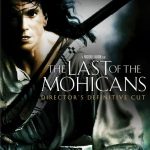The Village (2004)
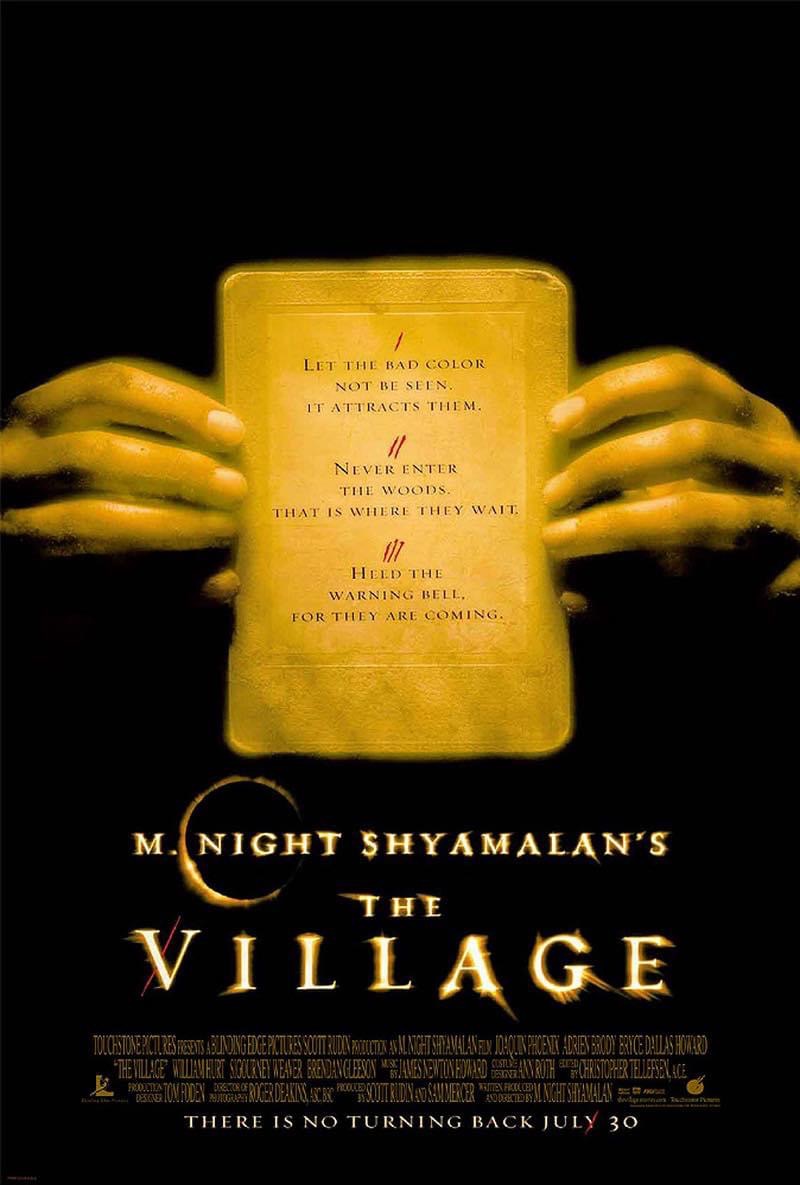
The Village (2004), directed by M. Night Shyamalan, is a suspenseful thriller set in a remote, 19th-century-like village that is haunted by mysterious creatures lurking in the surrounding woods. Known for its eerie atmosphere and intriguing premise, the film explores themes of fear, control, and innocence while delivering Shyamalan’s signature twist. Although it divided critics and audiences upon release, The Village has been praised for its visual style, haunting score, and ambitious storytelling.
Suggested videos for you:
Plot Summary
The story takes place in the isolated village of Covington, where residents live a peaceful, self-sustained life. However, they are confined by fear of the ominous creatures in the woods—referred to as “Those We Don’t Speak Of”—who are said to kill anyone who dares to cross the boundaries. This uneasy truce between the villagers and the creatures maintains a strict separation between the safety of the village and the forbidden woods.
At the heart of the story is Ivy Walker (Bryce Dallas Howard), a strong-willed blind woman, and her love for Lucius Hunt (Joaquin Phoenix), a quiet, introspective man who questions the village’s traditions. Lucius longs to venture beyond the woods to find medicine for the villagers, but his desire to explore the outside world is viewed as a threat to their way of life. The village’s elders, led by Edward Walker (William Hurt), are committed to keeping the community isolated, enforcing strict rules and maintaining an aura of secrecy.
The plot thickens when Lucius is attacked by another villager, Noah Percy (Adrien Brody), a mentally disabled man who has feelings for Ivy. With Lucius gravely injured, Ivy decides to journey through the forbidden woods to seek medical help in the “towns” beyond. Her journey reveals a shocking truth that upends her understanding of the world, unraveling the carefully constructed myth of the village and its secrets.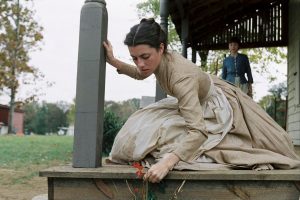
Themes and Symbolism
At its core, The Village explores the idea of fear as a tool of control. The elders perpetuate the myth of the creatures to keep the younger generation within the village and prevent them from venturing into the outside world. This manipulation of fear serves as a commentary on the lengths to which authority figures may go to preserve their ideals, even at the cost of their followers’ autonomy. By creating a perpetual state of fear, the elders protect the community from perceived evils but also restrict its growth and understanding of the world.
The film also delves into the theme of innocence and protection. The elders originally founded the village to shield their children from the cruelty of modern society. This desire to preserve innocence, however, leads to a warped sense of morality where deception and control become justified in the name of safety. Ivy’s blindness serves as both a literal and symbolic representation of innocence and purity, highlighting the elders’ attempts to keep the younger generation “blind” to the truth of the world beyond the woods.
The creatures, dressed in red cloaks and animalistic features, are embodiments of the community’s fears. The color red, considered a symbol of danger, is banned in the village, representing the elders’ attempt to suppress fear rather than confront it. The film questions whether it is ethical to shield people from the truth for their own perceived safety, suggesting that innocence preserved through deceit can lead to greater harm than the truths we fear.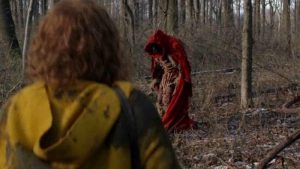
Cinematography and Visual Style
The Village is visually striking, with cinematography by Roger Deakins that heightens the film’s atmosphere. Deakins uses a muted color palette, with tones of earth and autumn, to convey the rustic simplicity of the village. The contrast between the warm yellows and browns of the village and the ominous dark greens of the woods creates an unsettling visual dichotomy, emphasizing the danger lurking beyond the safety of the village.
Deakins’ use of light and shadow plays a crucial role in building suspense, with scenes often framed to conceal the creatures or reveal them just briefly, maintaining an aura of mystery. The film’s restrained use of the creatures adds to the tension, as viewers catch only glimpses, leaving much to the imagination. Shyamalan’s direction, combined with Deakins’ cinematography, creates a haunting, claustrophobic atmosphere, where the peaceful village feels both tranquil and oppressive.
The film’s production design, including period-appropriate costumes and architecture, immerses viewers in the 19th-century aesthetic, grounding the story in a seemingly historical reality. The attention to detail in the setting serves to heighten the impact of the film’s twist, making the revelation about the true nature of the village all the more jarring.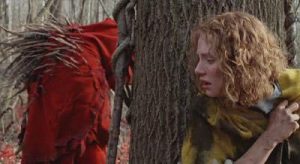
Music and Score
James Newton Howard’s score for The Village is one of its most lauded elements, blending haunting violin solos with a sense of quiet melancholy that mirrors the film’s tone. The music enhances the suspense, with its eerie, minimalist melodies creating an emotional undercurrent that reflects the isolation and longing of the characters. Howard’s score amplifies the film’s tension without overpowering it, and his compositions add a layer of poignancy to Ivy’s journey, emphasizing her courage and vulnerability.
Performances
Bryce Dallas Howard delivers a standout performance as Ivy, portraying her with a blend of innocence, strength, and determination. Ivy’s blindness is not presented as a limitation; rather, her courage and resourcefulness make her one of the village’s most resilient characters. Howard’s performance conveys the complexity of Ivy’s character, from her innocence and loyalty to her quiet strength in facing the unknown.
Joaquin Phoenix, as Lucius, brings a quiet intensity to his role. Lucius’ curiosity and willingness to question authority make him a compelling character, though his role is more subdued compared to Ivy’s. William Hurt as Edward Walker gives a layered performance, capturing the conflict within a man who believes he’s protecting his loved ones but is ultimately driven by fear. Adrien Brody’s portrayal of Noah Percy, a developmentally disabled villager, is sensitive and sympathetic, though some aspects of his character’s portrayal have been critiqued as problematic.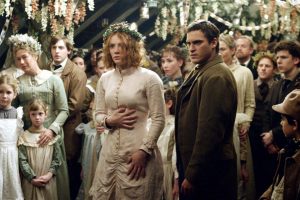
Reception and Legacy
Upon its release, The Village divided critics and audiences. While some praised its atmosphere, themes, and visual style, others criticized it for its twist ending, which they felt undercut the narrative’s suspense and believability. The twist—revealing that the village is actually a modern-day community created by the elders to escape the violence of contemporary society—polarized viewers. For some, it was an innovative commentary on fear and isolation; for others, it felt contrived and diminished the impact of the preceding story.
In retrospect, The Village has gained a more favorable reevaluation, with many critics and fans appreciating its exploration of fear and control. Its thematic complexity, visual storytelling, and Howard’s performance have led some to regard it as one of Shyamalan’s more ambitious films, even if it didn’t achieve the critical acclaim of The Sixth Sense or Signs.
Conclusion
The Village is an atmospheric thriller that tackles profound themes of fear, control, and the moral costs of preserving innocence. Through its eerie setting, strong performances, and haunting score, the film examines the lengths to which people go to protect themselves and others, even if it means creating a world built on deception. While the film’s twist may not resonate with everyone, its exploration of the consequences of fear and isolation make it a compelling entry in Shyamalan’s body of work.
By focusing on the psychological and societal impacts of isolation, The Village leaves viewers questioning the nature of protection and the ethical implications of manipulating fear to preserve an idealized way of life. It is a film that resonates on multiple levels, inviting reflection on the boundaries between safety and freedom, innocence and truth, and ultimately, the courage it takes to confront the unknown.
